Selecting Tarot Decks: A Guide for Enthusiasts
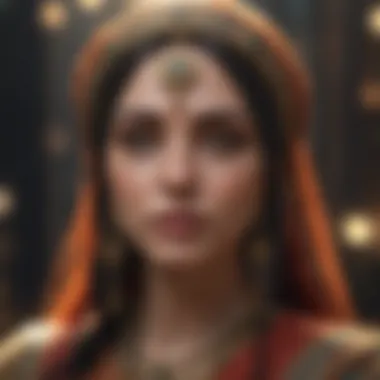
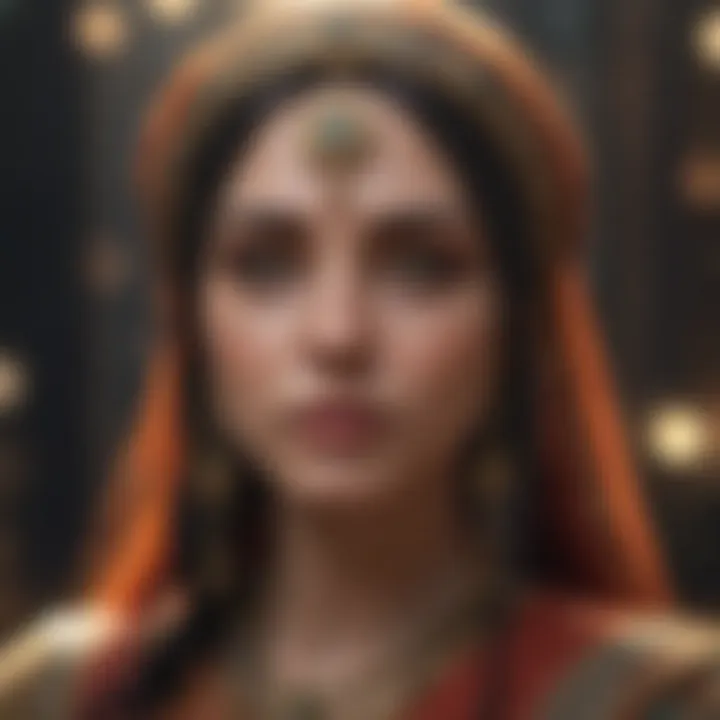
Intro
The realm of tarot is vast and diverse, presenting a rich tapestry of decks each with unique characteristics and artistry. For individuals delving into tarot, selecting the right deck is crucial. This choice can greatly influence one's connection to the cards and the readings that they offer. In this guide, we will probe into the factors to consider when choosing a tarot deck, covering historical contexts, artistic influences, and practical selection criteria. Our exploration aims to assist both beginners and seasoned tarot enthusiasts in making informed decisions.
Understanding Tarot Decks
In understanding tarot decks, it is essential to recognize their structural elements. A standard tarot deck comprises 78 cards divided into two main categories: the Major Arcana and the Minor Arcana. The Major Arcana consists of 22 cards representing significant life themes and spiritual lessons. The Minor Arcana contains 56 cards, which portray daily events and experiences, further divided into four suits.
Types of Tarot Decks
When selecting a tarot deck, it is important to consider the various types available. Here are some prominent categories:
- Traditional Tarot Decks: These decks, such as the Rider-Waite-Smith and Thoth Tarot, adhere to classical imagery and symbolism, making them ideal for beginners because of their established interpretations.
- Artistic Tarot Decks: Many artists create tarot decks that offer unique interpretations through visual art. Decks like the Wild Unknown Tarot and the Light Seer's Tarot are examples where creativity shines through each card's design.
- Themed Tarot Decks: These decks center on specific themes, such as mythology, astrology, or pop culture. Examples include the Halloween Tarot and the Cat's Eye Tarot. They can resonate strongly with personal interests.
- Oracle Decks: While not strictly tarot, oracle decks provide additional tools for divination. They typically contain fewer cards and do not follow a predetermined structure, allowing for more flexibility in readings.
Historical Context of Tarot
The history of tarot is intricate and multifaceted, tracing back to the 15th century when the earliest known decks were created in Europe. Initially used for gameplay, the tarot evolved into a divination tool during the 18th century. This transition paved the way for various interpretations and adaptations over the centuries. Understanding this historical backdrop can enrich a tarot enthusiast’s appreciation for the cards and their meanings.
Influential Artists and Publishers
Several artists and publishers have made significant contributions to the tarot community. Notable figures include:
- Pamela Colman Smith: The artist behind the iconic Rider-Waite-Smith deck, her imagery has influenced many tarot decks that followed.
- Aleister Crowley: Known for the Thoth Tarot, Crowley’s esoteric interpretations have had a lasting impact on tarot practices.
- Los Garabatos: A publisher responsible for producing innovative decks that combine various artistic styles and themes, encouraging exploration among practitioners.
By engaging with the works of these artists and publishers, tarot enthusiasts can find decks that resonate deeply.
Practical Considerations for Selection
When selecting a deck, practicality plays a critical role. Here are some key factors to consider:
- Intuition: Trust your instincts when browsing. A compelling visual connection to a deck can enhance your readings.
- Durability: Assess the material of the cards. High-quality cardstock will endure frequent handling and shuffling.
- Guidebook Availability: Some decks come with an accompanying guidebook. These resources can be invaluable, especially for beginners.
- User Reviews: Explore feedback from other tarot users. Their experiences will provide insights into various decks’ usability.
"Choosing a tarot deck is akin to choosing a companion for your spiritual journey. The right deck speaks to your soul and guides your explorations."
Through thoughtful consideration of these elements, an enthusiast can confidently select a tarot deck that will serve them well in their practices.
Understanding Tarot Decks
Understanding tarot decks is crucial for both novices and experienced practitioners. Tarot decks serve as the tool through which intuitive insights are conveyed during readings. By exploring their various components and formats, we can appreciate the profound significance that each deck holds in personal and spiritual development.
Different tarot decks can cater to diverse interpretations and preferences. Each deck carries its own symbolism and aesthetic, impacting how one connects with the cards. Hence, selecting the right tarot deck can enhance reading accuracy and deepen the overall experience.
In this section, we will delve into the definition of a tarot deck, its components like Major and Minor Arcana, and the various formats available in the tarot world.
What is a Tarot Deck?
A tarot deck typically consists of 78 cards divided into two main sections: the Major Arcana and Minor Arcana. The tarot is primarily used for divination and spiritual guidance. Each card within the deck represents different themes and archetypes, enabling the reader to tap into their intuition.
Understanding what a tarot deck encompasses is the first step toward making an informed purchase. The unique energies associated with individual decks can align differently with a person's intention, making it essential to explore each deck's characteristics.
Components of a Tarot Deck
Major Arcana
The Major Arcana consists of 22 cards that represent significant life events, spiritual lessons, and major influences. These cards are often seen as the backbone of a tarot deck, as they capture the essential themes of the human experience. Each card has a distinct meaning, often reflecting overarching themes such as death, love, and transformation. The key characteristic of the Major Arcana is its deeper philosophical implications.
The unique feature of the Major Arcana is that its cards, when drawn, tend to signify strong energies and pivotal moments in a reading. This makes them highly valuable in guiding individuals through challenging times. However, not every reading requires a focus on the Major Arcana. Understanding when to highlight these cards is crucial to effective interpretations.
Minor Arcana
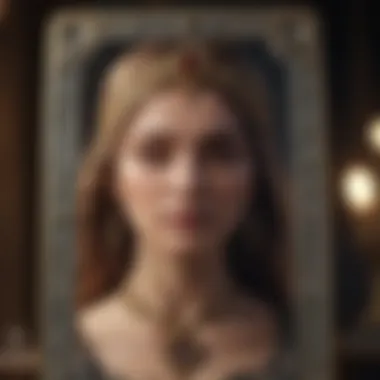
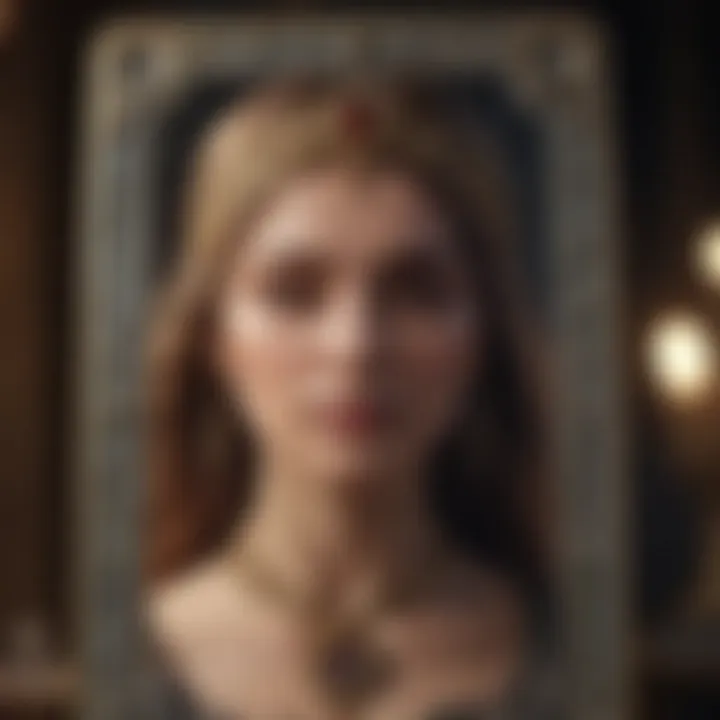
In contrast, the Minor Arcana includes 56 cards, categorized into four suits: Cups, Wands, Swords, and Pentacles. Each suit addresses different aspects of daily life, from emotions and relationships to actions and material concerns. The key characteristic of the Minor Arcana is its ability to explore the minutiae of everyday experiences.
The unique feature of the Minor Arcana lies in its everyday application. These cards help readers understand the smaller, yet equally important elements of life situations. However, their meanings may sometimes vary more widely than those of the Major Arcana, making interpretation context-dependent.
Suit Significance
Suit significance plays a vital role in the overall structure of tarot reading, as each suit has its own symbolic meaning attached. For example, Cups relate to emotions and relationships, while Wands correspond to creativity and action.
Understanding the specific aspects of each suit enhances one’s reading. Knowing how to interpret the suits can lead to more nuanced insights. Additionally, this knowledge can influence how one approaches various tarot decks. While beginners may favor decks that clearly delineate each suit, advanced readers often appreciate decks that challenge their understanding.
Popular Tarot Deck Formats
Traditional
Traditional tarot decks, like the Rider-Waite-Smith deck, are often characterized by their classic imagery and symbolism. They adhere closely to historical interpretations and are often recommended for beginners. The key characteristic of traditional decks is their imagery, which often conveys universal themes.
The unique feature of traditional decks is their reliability in adhering to established meanings. However, some might find them less inspiring compared to modern counterparts, particularly if they seek a fresh aesthetic.
Modern
Modern tarot decks incorporate contemporary themes, art styles, and interpretations. These decks often focus on inclusivity and diversity, reflecting current societal changes. The key characteristic of modern decks is their innovative design and concepts.
Their unique feature allows practitioners to connect with tarot through a lens that feels more relevant today. However, modern interpretations may deviate from traditional meanings, which can confuse some users.
Specialty Decks
Specialty decks cater to niche interests or specific themes, combining elements from tarot and other practices like oracle cards. The key characteristic of specialty decks is their unique approach to tarot. They may incorporate cultural themes or artistic inspirations.
These decks can offer compelling alternatives for experienced readers, but they may also require a deeper understanding of their theme. The advantage of specialty decks is their capacity to inspire creativity and unique interpretations. Yet, the disadvantage is that they may not align with traditional tarot practices.
Tarot Decks for Beginners
In the realm of tarot, the journey often begins with the selection of the right deck. This section focuses on the importance of choosing compatible tarot decks for newcomers. For those just starting their exploration, understanding what constitutes a beginner-friendly tarot deck can provide a solid foundation for further studies. A well-chosen deck caters to the user's learning curve, enhancing both comprehension and intuition. As the saying goes, the right tool makes the work easier; this is certainly true in tarot. Thus, understanding the characteristics and options available in beginner decks is crucial.
Characteristics of Beginner Friendly Decks
When considering beginner-friendly tarot decks, certain characteristics make them more suitable for novices. Primarily, these decks tend to feature clearly depicted imagery. This allows for easier interpretation and connection with the cards. Additionally, beginner decks often come with guidebooks that explain card meanings in straightforward language, helping users avoid confusion. Simplicity is key; intricate symbolism that may overwhelm the rookie reader is typically avoided. The art style is also important. Decks with bright colors and relatable themes can engage new users and encourage them to delve deeper into tarot reading.
Recommendations for New Users
With multiple beginner-friendly decks available, here are some of the most recommended options:
Rider-Waite-Smith
The Rider-Waite-Smith tarot deck shines as a cornerstone in the tarot community. Developed in the early 20th century, this deck is celebrated for its straightforward imagery and symbolism. Its key characteristic is the illustrated minor arcana, which helps users understand each card's significance intuitively.
This deck's widespread popularity means numerous resources are available, including books and online courses based on its teachings. Additionally, its sturdy structure makes it durable for extensive use. However, one possible drawback is its traditional approach, which might not resonate with all modern users seeking diverse perspectives.
Thoth Tarot
Developed by Aleister Crowley, the Thoth Tarot is renowned for its esoteric depth and rich symbolism. Its distinct characteristic lies in its complex imagery, which can be seen as both a benefit and a challenge for beginners. The deck encourages users to explore layers of meaning, appealing to those interested in the intellectual aspects of tarot.
One notable advantage is the extensive literature available that elaborates on its symbolic meanings. However, newcomers may find the complexity overwhelming without adequate guidance, making it less ideal for absolute beginners.
Modern Witch Tarot
The Modern Witch Tarot has emerged as a popular choice among novice readers. It features vibrant contemporary artwork that appeals to a wide audience. The key characteristics of this deck include its inclusive representation and straightforward interpretations, making it relatable to a modern demographic.
This deck empowers learners by offering easy accessibility to card meanings while promoting a sense of community within the tarot space. It does come with its unique challenge: the emphasis on modern themes may not align with traditional tarot readings, potentially leaving some purists feeling alienated.
"Selecting the right tarot deck is a personal journey. It shapes not just your readings, but how you connect with the broader universe of tarot."
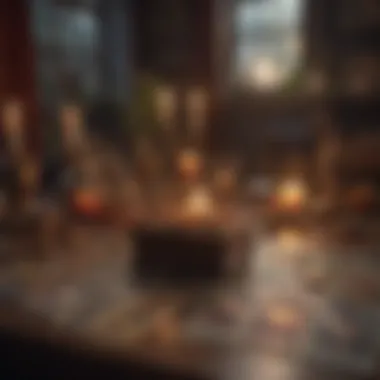
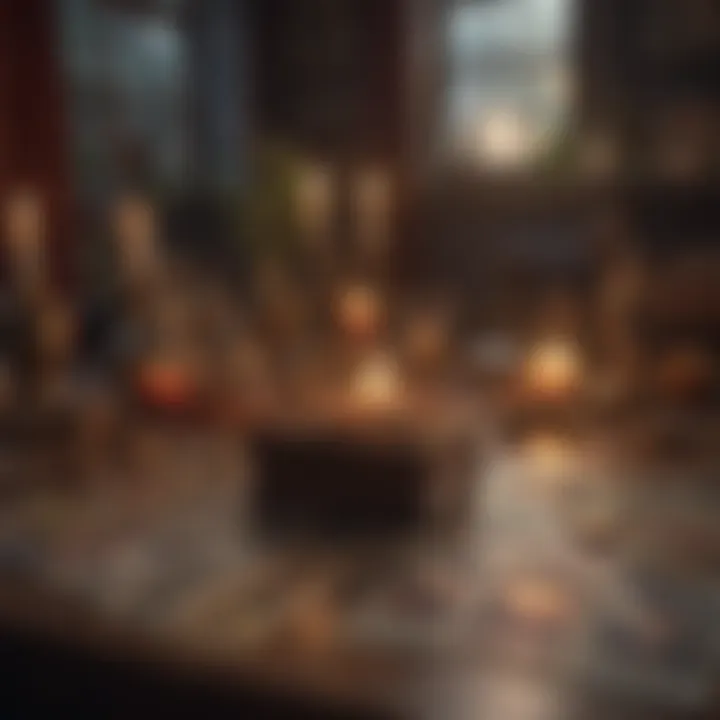
In summary, the explored beginner-friendly tarot decks each have distinct traits and benefits, catering to different learning styles and preferences. The Rider-Waite-Smith stands as a traditional starter option, while the Thoth invites deeper exploration. The Modern Witch offers a fresh perspective, ensuring there is a starting point for everyone eager to embark on their tarot journey.
Advanced Tarot Deck Options
Advanced tarot decks present an opportunity for seasoned readers to deepen their practice and understand tarot on a more sophisticated level. Selecting the right advanced deck can result in a more nuanced reading experience. These decks often feature unique symbolism, intricate art styles, or specific thematic elements which may align with a reader’s deeper interests or methods.
Understanding the way various elements interact in advanced decks enables readers to develop personal interpretations. Some decks are steeped in historical significance, while others delve into modern esoteric practices. In this section, we focus on identifying advanced features within these decks and highlight some notable choices for advanced practitioners.
Identifying Advanced Features
When looking at advanced tarot decks, readers should pay attention to several key features:
- Symbolism: Complex or layered symbols can enhance the richness of readings.
- Art Style: The artistic approach impacts interpretation significantly. Different styles can evoke unique feelings and insights.
- Thematic Consistency: Decks that adhere to a specific theme, such as mythology or astrology, can provide depth in readings.
- Expanded Guidebooks: Advanced decks often come with detailed guidebooks that offer extensive information and varied insights into card meanings.
- Cultural Context: Some decks reflect particular cultural histories, which can add layers to their use.
Assessing these features helps practitioners ensure that the deck aligns with their reading style and philosophies.
Notable Decks for Experienced Readers
Marseille Tarot
The Marseille Tarot is one of the oldest tarot decks still in use today. Its simplistic imagery, primarily derived from woodblock prints, focuses on a more archetypal approach to divination. The key characteristic of this deck is its unillustrated pip cards in the Minor Arcana, which compel the reader to tap into their intuition rather than relying on detailed imagery. This can be both a beneficial and challenging aspect, as it offers a blank canvas for personal interpretation. Also, its cultural roots provide a historical richness that resonates with many enthusiasts.
Golden Dawn Deck
The Golden Dawn Tarot is based on the esoteric teachings of the Hermetic Order of the Golden Dawn, which emerged in the late 19th century. This deck incorporates a wealth of occult knowledge and features elaborately illustrated cards. The primary benefit is its potential for deep, layered readings based on Kabbalistic and astrological principles. However, it can be overwhelming for some, as its complexity requires substantial study for meaningful use in readings.
Wild Unknown Tarot
The Wild Unknown Tarot, created by Kim Krans, stands out due to its modern and expressive artwork. Each card is illustrated plainly but resonates with emotional depth, appealing to intuitive reading styles. Readers often find it beneficial for exploring personal themes and fostering connections with their inner selves. However, the very modern aesthetic might not suit those who prefer traditional imagery, making it a subjective choice.
"Advanced tarot decks can unlock a reader's deeper understanding and intuition, making the reading experience profoundly personal."
In summary, selecting an advanced tarot deck requires careful consideration of the features that resonate with the reader’s experience. The Marseille Tarot, Golden Dawn Deck, and Wild Unknown Tarot each provide distinct avenues for exploration in the advanced tarot landscape. Engaging with these options can significantly enhance one's practice.
The Role of Art in Tarot
Art plays a crucial role in the world of tarot. It serves as the visual language that communicates the themes and symbols inherent in each card. A tarot deck is not just a tool for divination; it embodies the artistry and insights of its creator. Every artist brings their perspective, influencing how interpretations evolve over time. The visual representation impacts not only the aesthetic appeal but also the reader's intuitive connection with the cards.
Choosing a tarot deck often hinges on the emotional and artistic resonance between the user and the imagery presented. This connection can enhance the reading experience, making it more personal and insightful. Whether through vibrant colors, intricate designs, or minimalist styles, the art enhances the exercise of divination itself.
Influential Tarot Artists
Pamela Colman Smith
Pamela Colman Smith is perhaps best known for her work on the Rider-Waite-Smith tarot deck, completed in 1909. Her artistry introduced a vivid pictorial context to the tarot cards, allowing for deeper interpretations. The key characteristic of Smith's artwork is its expressiveness, which captures complex emotions and concepts in simple imagery. This deck has become a standard, popular with both beginners and seasoned readers.
Smith's unique feature is the inclusion of detailed scenes on the Minor Arcana cards, which contrasts sharply with earlier decks that often featured only symbolic representations. This inclusion offers users more context and depth in readings, enhancing their overall experience.
However, some may find that the artwork's style may not resonate with modern aesthetics, which can be a disadvantage for those seeking a contemporary touch.
Aleister Crowley
Aleister Crowley, a figure as controversial as he is influential, created the Thoth Tarot deck in the mid-20th century. This deck is known for its complex symbols and rich colors, reflecting Crowley's unique blend of mysticism, psychology, and ancient knowledge. The key aspect of Crowley's contribution is his integration of Kabbalistic ideas and astrological symbols, which appealed to more esoteric practitioners.
The advantage of the Thoth deck lies in its depth, offering layered meanings that can be explored by those with a background in occult knowledge. However, the complexity might be daunting for beginners, making it less approachable compared to simpler decks.
Lisa Sterle
Lisa Sterle is known for her Modern Witch Tarot deck, which seeks to rejuvenate the traditional tarot imagery with contemporary themes. One significant characteristic of Sterle's work is her focus on inclusivity and representation, elements that resonate with a diverse audience. This deck is appreciated for its modern and appealing artistic style, which draws in new tarot enthusiasts.
Sterle's unique feature is her ability to blend traditional symbolism with a fresh aesthetic, which appeals to younger audiences and those new to tarot. While some purists may argue that it strays from traditional imagery, the accessibility and modern context can lead to profound personal insights.
The Impact of Art Styles
The art style of a tarot deck can influence how users interact with the cards. Each style conveys a unique energy and can evoke different feelings and associations. Traditional styles often emphasize symbolism and classic iconography, while modern styles may incorporate contemporary themes and designs.
Where to Buy Tarot Decks
Finding the right place to purchase tarot decks is crucial for both beginners and seasoned readers. The choice of vendor can affect the selection available, pricing, and even the quality of the deck. Whether you prefer online shopping or visiting physical stores, knowing where to buy tarot decks allows you to make informed decisions. This section outlines the different options available and their respective advantages and disadvantages.
Online Retailers
In today's digital age, online retailers constitute a primary source for tarot decks. The convenience of shopping from home combined with extensive selections makes them an appealing choice for many.
Amazon
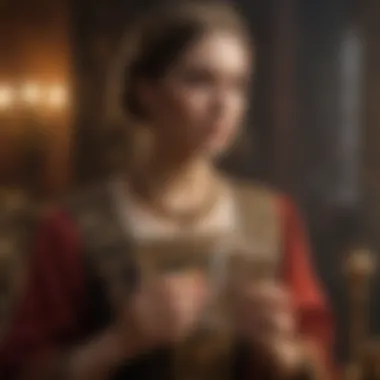
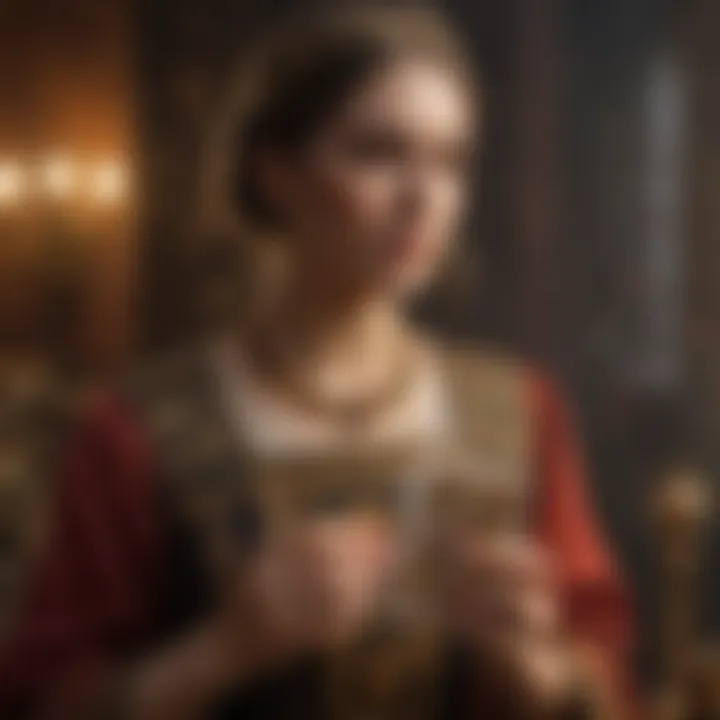
Amazon is one of the largest online retailers in the world. The platform offers a vast variety of tarot decks, from popular classics to obscure finds. A key characteristic of Amazon is its customer review system. This allows potential buyers to assess the quality and relevance of decks based on real user experiences. The sheer range of options is a significant advantage, but it can be overwhelming for those unfamiliar with different decks. Additionally, while prices are generally competitive, buyers should remain cautious about purchasing from third-party sellers, as the quality can vary.
Etsy
Etsy is a marketplace that connects buyers with independent creators. This aspect makes it an excellent choice for those looking for unique or handcrafted tarot decks. The key characteristic of Etsy is its focus on artisanal products, often reflecting individual artistic styles and preferences. The advantage of buying from Etsy is the opportunity to support small businesses and obtain custom designs. However, the selection can vary significantly, and potential shipping delays may occur.
Specialized Stores
Specialized stores focus specifically on esoteric materials, including tarot decks. These shops often provide a curated selection of decks, which are chosen for their quality and relevance to the craft. A notable feature of specialized stores is the knowledgeable staff who can offer guidance to customers based on their interests. The beneficial aspect is the potential for an informed purchasing decision, as staff can provide insights into particular decks. However, pricing at specialized stores may be higher than average, and not all locations offer an extensive online presence.
Local Outlets
For some tarot enthusiasts, shopping in person can be a more satisfying experience. Local outlets provide the opportunity to see and feel the decks before making a purchase.
Bookstores
Many bookstores carry a selection of tarot decks alongside other metaphysical literature. A primary advantage of bookstores is accessibility; they often have established reputations and a steady flow of customers. Additionally, browsing through the decks allows customers to experience the artwork and feel the cards before buying. However, the selection may be limited compared to specialized shops or online retailers, which can be a drawback for serious enthusiasts.
Metaphysical Shops
Metaphysical shops concentrate on esoteric topics and products. They often have a dedicated section for tarot decks, making them a valuable resource for enthusiasts. The key characteristic of these shops is their atmosphere, often enriched with various spiritual tools. Customers can benefit from personalized advice and recommendations based on their individual needs. A disadvantage may be that these shops are not always widely available, depending on the location.
Flea Markets
Flea markets can offer unexpected finds, including tarot decks. The characteristic feature of flea markets is their eclectic nature, often presenting a mix of new and vintage decks. Shopping here can yield unique options at competitive prices. However, the unpredictable availability of specific decks can be a downside. It often requires patrons to visit regularly to find desired items.
Maintaining Your Tarot Deck
Maintaining your tarot deck is crucial for both its longevity and the quality of your readings. After all, a well-cared-for deck not only serves you better but also connects with your energy in a more profound way. Tarot cards can be seen as tools of personal insight and guidance. Thus, ensuring they are kept in good condition directly influences the effectiveness of your divination practice.
When you invest in a tarot deck, you are not only acquiring a collection of cards but engaging with a rich tradition of symbolism and meaning. Regular maintenance can include basic care routines as well as attentiveness to the signs that indicate your deck may need replacing. By adhering to best practices in maintaining your tarot deck, you enhance its energy flow, preserve its appearance, and safeguard its structural integrity.
Best Practices for Care
To maintain your deck effectively, there are several best practices to follow:
- Cleansing the Deck: Regular cleansing helps to remove stagnant energy that may have accumulated. You can cleanse your tarot deck by using methods such as smoke cleansing, salt, or moonlight exposure.
- Storage: Keep your tarot deck in a silk or velvet pouch to protect it from wear and tear. Avoid placing it in humid or bright locations to ensure the cards do not warp or fade.
- Handling: When shuffling and handling the cards, be gentle. Rough handling can damage the card edges or lead to bending. Consider using a soft surface when you lay out the cards.
- Regular Use: Using your cards frequently helps to maintain their energy. If left untouched, the cards may lose their connection and vibrancy.
Incorporating these practices into your routine with your tarot deck can be rewarding. Each method contributes to preserving the deck's condition and ensuring that it retains its meaning and vibrancy for your practice.
When to Replace Your Deck
Knowing when to replace your tarot deck is perhaps just as essential as knowing how to maintain it. Certain signs indicate that your deck may no longer serve its purpose effectively.
- Physical Damage: Look for frayed edges, fading imagery, or bent cards. Physical deterioration not only affects the deck's appearance but can also influence the way you connect with the card meanings.
- Change in Energy: If you notice a shift in your readings or if the cards feel lifeless during use, it may be time to consider a new deck. Your intuition plays a pivotal role here; trust your feelings about the deck's energy.
- Personal Growth: As you evolve in your tarot practice, you might find that your current deck no longer aligns with your journey. Opting for a new deck can reflect your current level of understanding and curiosity.
In summary, maintaining your tarot deck involves caring for its physical condition and being in tune with your personal connection to the cards. Recognizing when it is time for a change can help ensure that your readings remain insightful and reflective of your evolving path.
Epilogue
The choice of a tarot deck is not a trivial matter. It is intrinsically linked to the reader’s personal journey and connection to the tarot. Selecting the right deck can greatly enhance one's practice, offering both aesthetic pleasure and a tool for insightful readings. Readers should acknowledge several key elements when concluding their selection process.
First, consider the artwork of the deck. This aspect will influence the reader’s emotional response and can offer deeper meanings during a reading. A deck that resonates personally can foster a stronger connection to the cards, making the reading experience more intuitive.
Secondly, the thematic alignment with one's personal beliefs and practices is crucial. Some tarot decks are created with a specific spiritual or cultural ethos in mind. Aligning with these qualities can deepen the overall experience and improve interpretation during readings.
Third, when thinking about purchasing a deck, contemplate your skill level. Beginners might benefit from decks with rich symbolism and comprehensive guidebooks, while experienced readers may prefer decks that explore more complex themes or allow for innovative interpretations.
Final Thoughts on Choosing a Tarot Deck
Choosing a tarot deck involves thoughtful consideration and an understanding of one's aspirations in tarot reading. A deck should feel comfortable in hand, and its images should evoke a meaningful response.
Here are some final considerations when selecting a tarot deck:
- Reflect on Your Preferences: Identify what aspects of a deck resonate with you. Is it the imagery, the theme, or the historical significance?
- Research Different Decks: Explore various decks. Check reviews, join discussions on platforms like Reddit, or ask fellow tarot enthusiasts for recommendations.
- Experiment with Several Decks: If possible, try out different decks before settling on one. Many shops allow you to handle the cards, which can help you gauge your connection with each deck.
Ultimately, remember that there is no 'one size fits all' in tarot. Each reader's journey is unique. Embrace the process of exploration, and do not hesitate to trust your intuition in selecting a deck that speaks to you deeply. Your tarot deck is more than just a set of cards; it is a personalized tool for insight and reflection.







